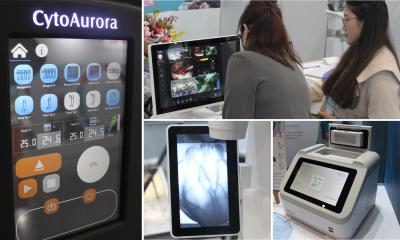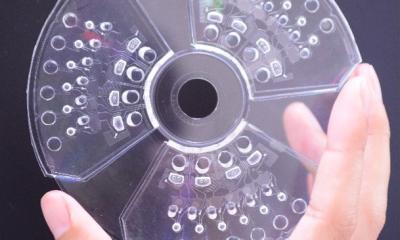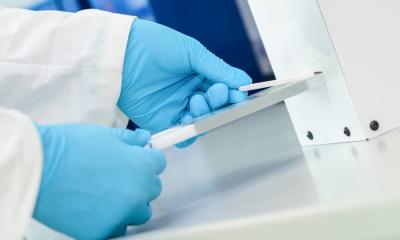
Image source: Costantini et al., Biosensors 2023 (CC BY 4.0)
PCR
New biomolecular monitoring tool based on lab-on-a-chip for virus detection
Over the last 20 years, the development of lab-on-a-chip (LoC) devices for performing real-time PCR (LoC-PCR) has been an active research field. LoC devices are advantageous compared to macroscopic equivalents due to their smaller dimensions, high integrability and automation, time and cost reduction, high sensitivity and selectivity, ability to integrate multistep operations in a single chip, and the possibility of real-time monitoring. Indeed, small scale means low fluid volume for the analysis and rapid heat transfer, thus shortening the analysis time. ‘Compared to the standard bulky equipment, real-time LoC-PCR devices are smaller, ensuring portability and making these devices suitable for point-of-care (POC) diagnostics and in-field analysis,’ said Francesca Costantini from the Department of Environmental Biology at the Sapienza University of Rome, Italy.
By using a microwell plate optically coupled with the SoG, real-time reverse transcriptase PCR of RNA extracted from both a plant and human virus has been carried out in the developed LoC-PCR device
Francesca Costantini
These features indicate that LoC-PCR may represent a major breakthrough for the early detection of pathogens and a prompter of actions to control disease epidemics and infection spreading. In May 2023, researchers from Costantini’s Department, and from the Department of Biomedical and Clinical Sciences at Milan University published a study in the journal Biosensors presenting a new lab-on-a-chip-PCR device.
Thermalisation, temperature control and detection elements are all integrated on a single glass substrate named System-on-Glass (SoG) obtained using metal thin-film deposition. ‘By using a microwell plate optically coupled with the SoG, real-time reverse transcriptase PCR of RNA extracted from both a plant and human virus has been carried out in the developed LoC-PCR device,’ said Costantini. The limit of detection and analysis time to detect the two viruses by using the LoC-PCR were compared with those achieved by standard equipment.
The results showed that the two systems can detect the same concentration of RNA. However, and this is a breakthrough, the LoC-PCR performs the analysis in half the time compared to the standard thermocycler, with the advantage of portability, leading to a point-of-care device for several diagnostic applications. (BB)
13.11.2023











